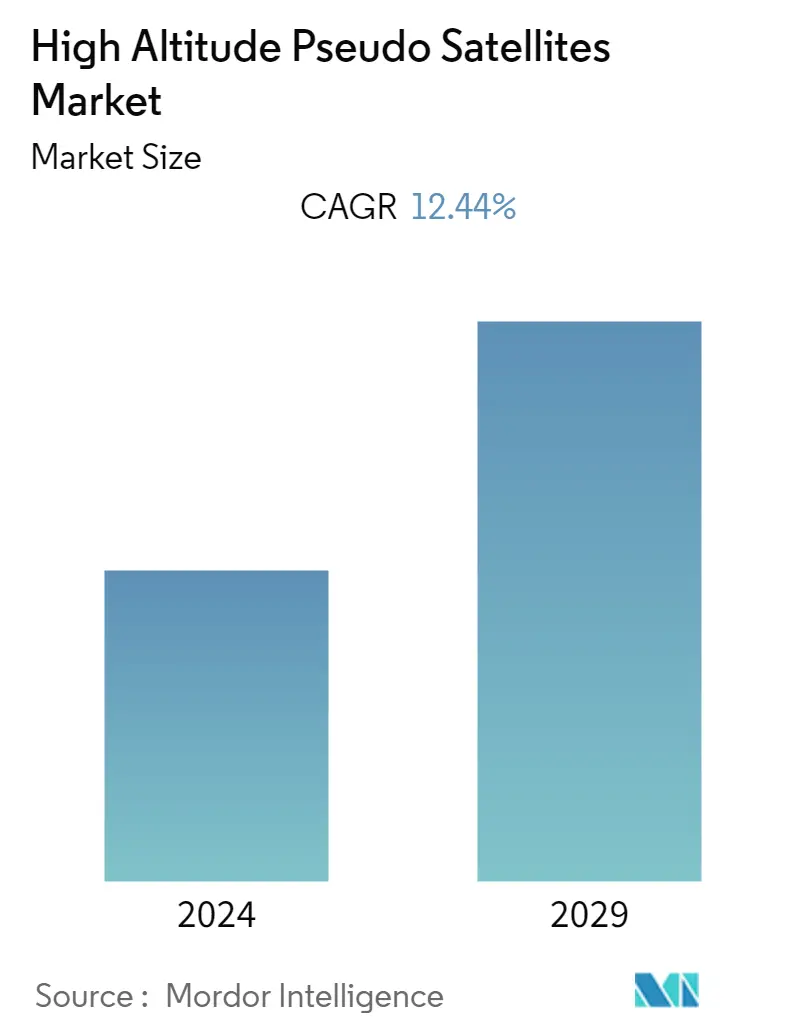Market Size of High Altitude Pseudo Satellites Industry

| Study Period | 2019 - 2029 |
| Base Year For Estimation | 2023 |
| CAGR | 12.44 % |
| Fastest Growing Market | Asia Pacific |
| Largest Market | North America |
| Market Concentration | Low |
Major Players
*Disclaimer: Major Players sorted in no particular order |
Need a report that reflects how COVID-19 has impacted this market and its growth?
High-Altitude Pseudo Satellites (HAPS) Market Analysis
The High-altitude Pseudo Satellites Market is valued at USD 0.76 billion in 2023 and is anticipated to reach USD 1.37 billion by 2028, registering a CAGR of 12.44% during the forecast period.
HAPS incorporates the best aspects of terrestrial and satellite-based communication systems. They eliminate the capacity and performance limitations of satellites by efficiently delivering voice, video, and broadband services at much more economical pricing vs. performance margins than conventional geostationary satellites. Hence, they are being increasingly adopted by telecommunication service providers to satiate the demand for high-capacity wireless services, especially last-mile delivery in remote areas with limited ground-based network coverage.
Though HAPS are more economical to manufacture and operate, the endurance of such platforms limits their effectiveness. In the case of HAPS platforms, such as unmanned aerial vehicles (UAVs), an electric propulsion system is integrated to enhance the endurance of the platform. It resulted in significant R&D investments towards the development of powerful battery systems and high-charge density solar panels to enhance the endurance of HAPS platforms, thereby making it more feasible for adoption by telecom and emergency service provider end-users.
HAPS operates at the stratospheric layer of the Earth's atmosphere, where the air density is around 7% compared to that at sea level. Hence, airborne systems face several operational challenges. For instance, since the lift generated is a direct function of air density, such platforms may also require a larger wing area (in the case of a fixed-wing UAV) or volume (in the case of an airship or balloon) to achieve sustained flight. To ensure compliance with the design's weight specifications, system designers must incorporate relatively advanced and lightweight materials for achieving weight optimization. For instance, Google is experimenting with a variety of materials for Project Loon. They envisioned using a combination of metalized mylar, Biaxially-oriented polyethylene terephthalate (BoPET), and highly flexible chloroprene for the Loon stratospheric balloon project. Similarly, Facebook used T700 carbon fiber for the construction of the prototype for Aquila. Ongoing development of HAPS models is also envisioned to foster the R&D towards lightweight materials during the forecast period.
